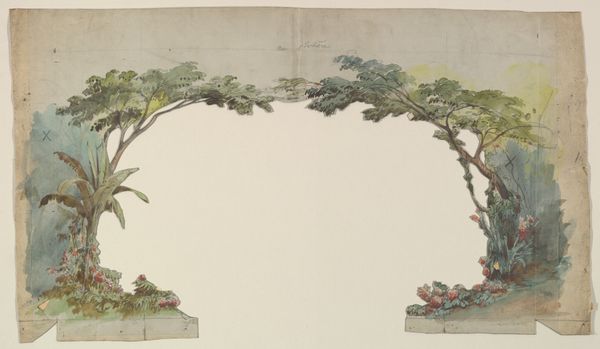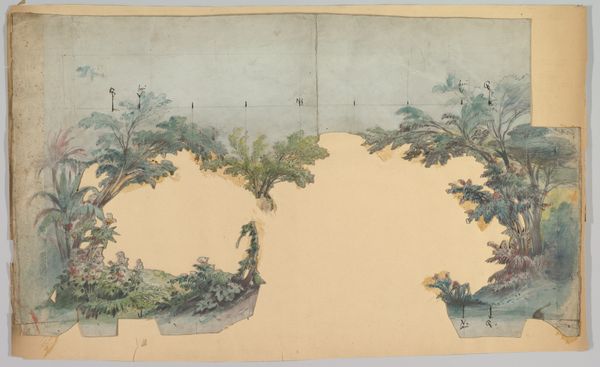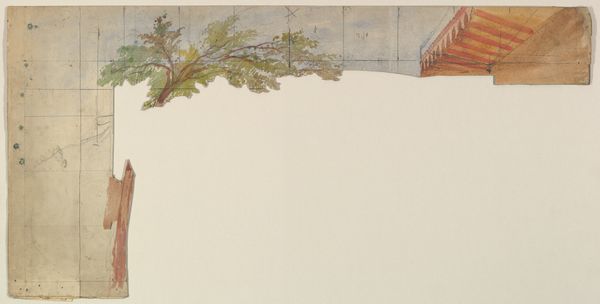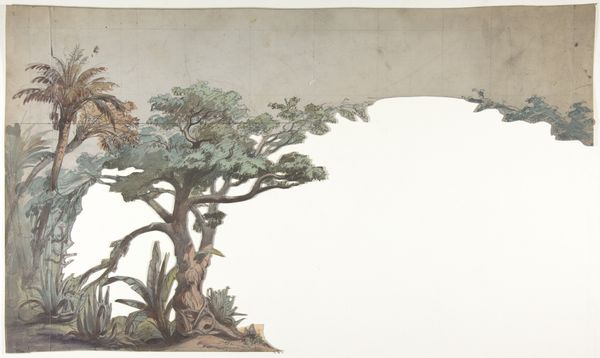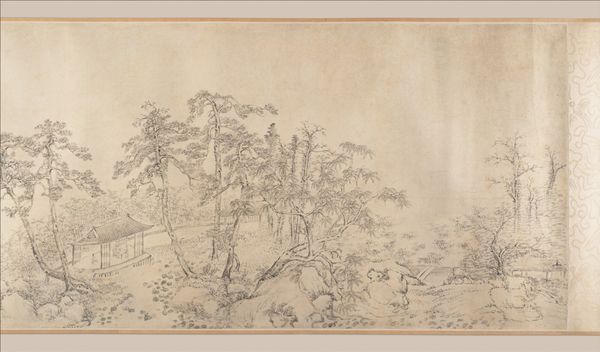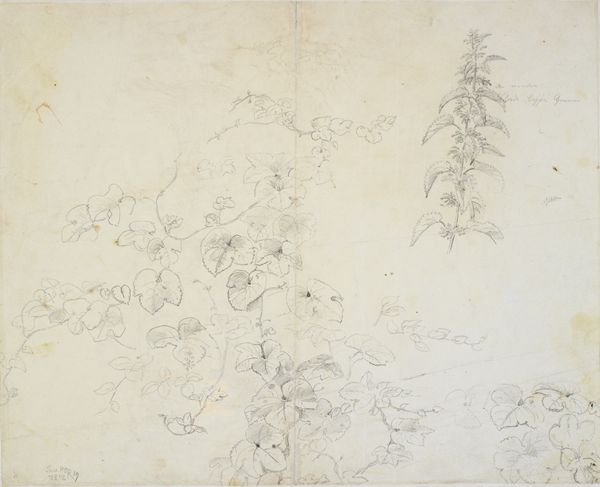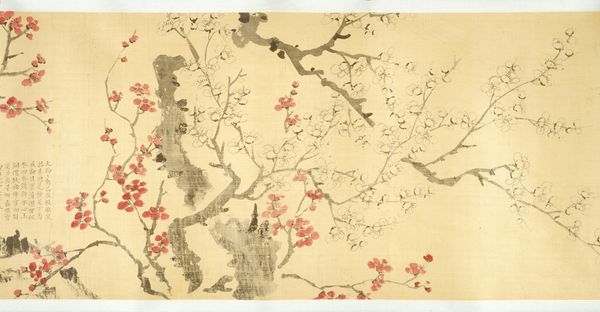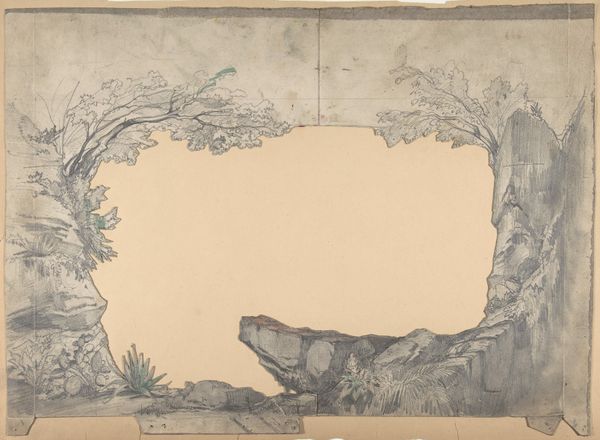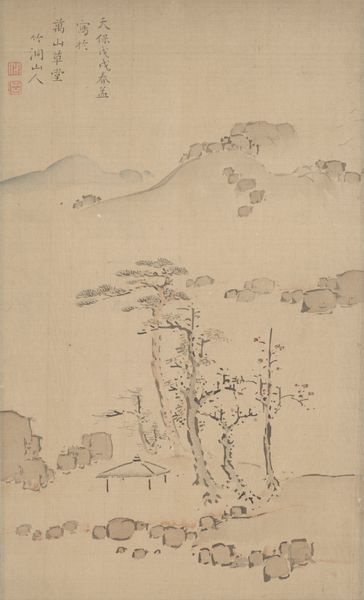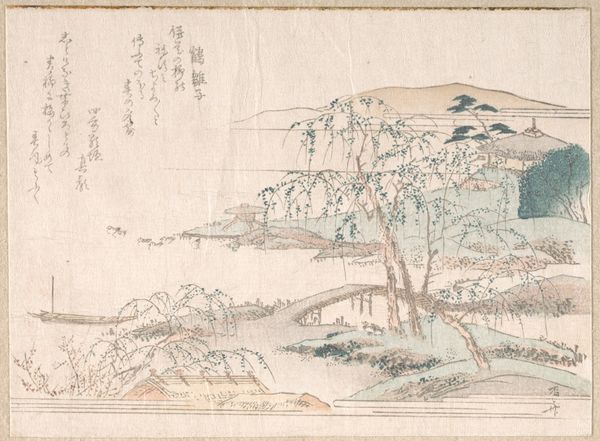
Copyright: Public Domain
Editor: This is Eugène Cicéri's "Design for a Stage Set," dating from 1830 to 1890. It appears to be watercolor and print on paper. It's quite serene, almost dreamlike, but I’m curious how a formalist would interpret something seemingly so…representational. What do you see in this piece in terms of its intrinsic qualities? Curator: Disregarding its representational function as a stage set design, let us examine the formal elements. Consider the composition: two distinct masses of foliage are strategically placed to create a visual tension. The negative space becomes a vital element, influencing how we perceive the forms themselves. Notice how the artist uses the gridlines subtly, structuring the space and adding another layer to its flatness. Editor: So you're focusing on the relationship between the positive and negative space, and how the grid functions as a structural element. Is the color palette significant from a formalist perspective? Curator: Absolutely. Observe the limited range of primarily muted greens and blues, punctuated by a sudden splash of red, functioning not to render a scene, but to interrupt the tonal harmony, disrupting any naturalistic reading. The medium itself, watercolor, contributes to the piece’s ethereal quality because of its properties, but then overlaid with print with lines of the trees to contrast. Does it challenge the flatness of the picture plane, do you think? Editor: I think so, by suggesting a sort of perspectival depth but it remains essentially an artistic composition... So by focusing on the interaction of line, color, and space, and how the piece plays with its materials and construction, the formal elements create their own meaning, apart from the representational aspect. Curator: Precisely. This analysis allows us to view the design as a self-referential artwork. Even without knowing its function, one could deduce this from its arrangement, which highlights color relations as well as formal techniques. Editor: Fascinating. I’ll definitely look at stage designs differently now.
Comments
No comments
Be the first to comment and join the conversation on the ultimate creative platform.


